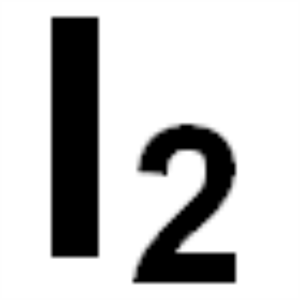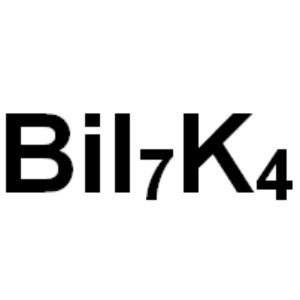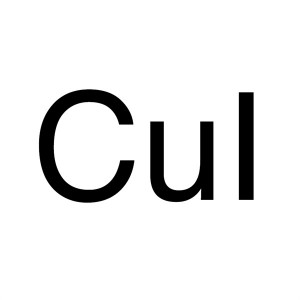Iodine CAS 7553-56-2 Purity ACS ≥99.8%
Ruifu Chemical is the leading manufacturer of Iodine (CAS: 7553-56-2) with high quality, commercial production, ACS reagent, ≥99.8%. Ruifu Chemical can provide worldwide delivery, competitive price, excellent service, small and bulk quantities available. Purchase Iodine, Please contact: alvin@ruifuchem.com
| Chemical Name | Iodine |
| Synonyms | I2 |
| Stock Status | In Stock, Commercial Production |
| CAS Number | 7553-56-2 |
| Molecular Formula | I2 |
| Molecular Weight | 253.81 g/mol |
| Melting Point | 114℃ |
| Boiling Point | 184℃ |
| Water Solubility | Insoluble in Water |
| Solubility (Soluble in) | Benzene, Ether, Chloroform, Alcohol |
| COA & MSDS | Available |
| Sample | Available |
| Origin | Shanghai, China |
| Brand | Ruifu Chemical |
| Items | Specifications | Results |
| Appearance | Grey to Very Dark Grey Beads or Flakes | Complies |
| Assay (Titration by Na2S2O3) | 99.8~100.0% | ≥99.8% |
| Non-Volatile Matter | ≤0.01% | <0.01% |
| Chloride and Bromide (As Cl-) | ≤0.005% | <0.005% |
| Sulfate | ≤0.03% | <0.03% |
| X-Ray Diffraction | Conforms to Structure | Complies |
| Conclusion | The product has been tested and complies with the given specifications | |
Package: Bottle, 25kg/Cardboard Drum, or according to customer's requirement.
Storage Condition: Keep the container tightly closed and store in a cool, dry, well-ventilated and dark warehouse away from incompatible substances. Protect from light and moisture. Keep away from heat source and fire.
Shipping: Deliver to worldwide by air, by FedEx / DHL Express. Provide fast and reliable delivery.
Iodine
I2 253.81
Iodine [7553-56-2].
DEFINITION
Iodine contains NLT 99.8% and NMT 100.5% of I.
IDENTIFICATION
• A. Solutions (1 in 1000) in chloroform and in carbon disulfide have a violet color.
• B.
Analysis: To a saturated solution add starch-potassium iodide TS.
Acceptance criteria: A blue color is produced. When the mixture is boiled, the color vanishes but reappears as the mixture cools, unless it has been subjected to prolonged boiling.
ASSAY
• Procedure
Sample: 500 mg of powdered Iodine
Analysis: Place the Sample in a tared, glass-stoppered flask, insert the stopper, and add 1 g of potassium iodide dissolved in 5 mL of water. Dilute with water to 50 mL, add 1 mL of 3 N hydrochloric acid, and titrate with 0.1 N sodium thiosulfate VS, adding 3 mL of starch TS as the endpoint is approached. Each mL of 0.1 N sodium thiosulfate is equivalent to 12.69 mg of Iodine (I).
Acceptance criteria: 99.8%-100.5%
IMPURITIES
• Limit of Chloride or Bromide
Sample solution: Triturate 250 mg of finely powdered Iodine with 10 mL of water, and filter the solution.
Analysis: To the Sample solution add, dropwise, sulfurous acid (free from chloride), previously diluted with several volumes of water, until the iodine color just disappears. Add 5 mL of 6 N ammonium hydroxide, followed by 5 mL of silver nitrate TS in small portions. Filter, and acidify the filtrate with nitric acid.
Acceptance criteria: The resulting liquid is not more turbid than a control made with the same quantities of the same reagents to which 0.10 mL of 0.020 N hydrochloric acid has been added, the sulfurous acid being omitted (0.028% as chloride).
• Limit of Nonvolatile Residue
Analysis: Place 5.0 g in a tared porcelain dish, heat on a steam bath until the iodine has been driven off, and dry at 105 for 1 h.
Acceptance criteria: NMT 0.05% of the residue remains.
ADDITIONAL REQUIREMENTS
• Packaging and Storage: Preserve in tight containers.
How to Purchase? Please contact Dr. Alvin Huang: sales@ruifuchem.com or alvin@ruifuchem.com
15 Years Experience? We have more than 15 years of experience in the manufacture and export of a wide range of high quality pharmaceutical intermediates or fine chemicals.
Main Markets? Sell to domestic market, North America, Europe, India, Korea, Japanese, Australia, etc.
Advantages? Superior quality, affordable price, professional services and technical support, fast delivery.
Quality Assurance? Strict quality control system. Professional equipment for analysis include NMR, LC-MS, GC, HPLC, ICP-MS, UV, IR, OR, K.F, ROI, LOD, MP, Clarity, Solubility, Microbial limit test, etc.
Samples? Most products provide free samples for quality evaluation, shipping cost should be paid by customers.
Factory Audit? Factory audit welcome. Please make an appointment in advance.
MOQ? No MOQ. Small order is acceptable.
Delivery Time? If within stock, three days delivery guaranteed.
Transportation? By Express (FedEx, DHL), by Air, by Sea.
Documents? After sales service: COA, MOA, ROS, MSDS, etc. can be provided.
Custom Synthesis? Can provide custom synthesis services to best fit your research needs.
Payment Terms? Proforma invoice will be sent first after confirmation of order, enclosed our bank information. Payment by T/T (Telex Transfer), PayPal, Western Union, etc.
Hazard Symbols Xn - Harmful
N - Dangerous for the environment
Dangerous for the environment
Risk Codes R20/21 - Harmful by inhalation and in contact with skin.
R50 - Very Toxic to aquatic organisms
Safety Description S23 - Do not breathe vapour.
S25 - Avoid contact with eyes.
S61 - Avoid release to the environment. Refer to special instructions / safety data sheets.
RIDADR UN 2056 3/PG 2
WGK Germany 2
RTECS NN1575000
F 10
TSCA Yes
HS Code 2801200000
Hazard Class 8
Packing Group III
Function and Application of Iodine (CAS: 7553-56-2)
1. Mainly used in the manufacture of iodides, used in the manufacture of pesticides, feed additives, dyes, iodine, test paper, drugs, and iodine compounds, etc. Materials for use in electronic industry, high purity reagents.
2. Used in the preparation of equivalent solvents, determination of iodine value, and calibration of sodium thiosulfate solution concentration. The solution can be used as a disinfectant and photo-engraving
3. Used in the preparation of iodine and thinning liquid in photoengraving.
4. Use for volumetric analysis and colorimetric analysis
5. Used mainly as a disinfectant. Use disinfection and sterilization.
6. Use is the basic raw material for the manufacture of inorganic iodine and organic iodines, mainly used in medicine and hygiene, used in the manufacture of various iodine preparations, disinfectant, disinfectant, deodorant, analgesic and radioactive substances antidote. It is the raw material of the pesticide and the feed additive. Bacteriostatic agent for industrial synthetic dyes, smoke extinguishing agents, photographic emulsion and cutting oil emulsion. Single crystal prism for manufacturing electronic instrument, polarizing lens for optical instrument and glass capable of transmitting infrared ray.
7. Analytical chemistry.Iodine can be detected in iodimetry for many substances. Iodine forms a blue complex with starch. This complex can be used to detect starch or Iodine and is a REDOX indicator in iodometry. Iodine can be used to detect whether a bill is made of starchy paper. Iodine is often used to determine the unsaturation of fatty acids (iodide), which results from a double bond that reacts with Iodine.
Iodine (CAS: 7553-56-2) is an oxidizing agent. Reacts vigorously with reducing materials. Incompatible with powdered metals in the presence of water (ignites), with gaseous or aqueous ammonia (forms explosive products), with acetylene (reacts explosively), with acetaldehyde (violent reaction), with metal azides (forms yellow explosive iodoazides), with metal hydrides (ignites), with metal carbides (ignites easily), with potassium and sodium (forms shock-senstive explosive compounds) and with alkali-earth metals (ignites). Incompatible with ethanol, formamide, chlorine, bromine, bromine trifluoride, chlorine trifluoride.
Iodine vapors are an irritant to eyes, nose and mucous membranes.Inhalation can cause headache, irritation, and congestion of lungs. Oralintake can produce burning of the mouth, vomiting, diarrhea, and abdominalcramps. Skin contact can cause rashes.
Iodine is noncombustible and in itself represents a negligible fire hazard when exposed to heat or flame. However, when heated, it will increase the burning rate of combustible materials.
Safety goggles and rubber gloves should be worn when handling iodine, and operations involving large quantities should be conducted in a fume hood to prevent exposure to iodine vapor or dusts by inhalation.
Iodine is stable under normal temperatures and pressures. Iodine may react violently with acetylene, ammonia, acetaldehyde, formaldehyde, acrylonitrile, powdered antimony, tetraamine copper(II) sulfate, and liquid chlorine. Iodine can form sensitive, explosive mixtures with potassium, sodium, and oxygen difluoride; ammonium hydroxide reacts with iodine to produce nitrogen triiodide, which detonates on drying.





